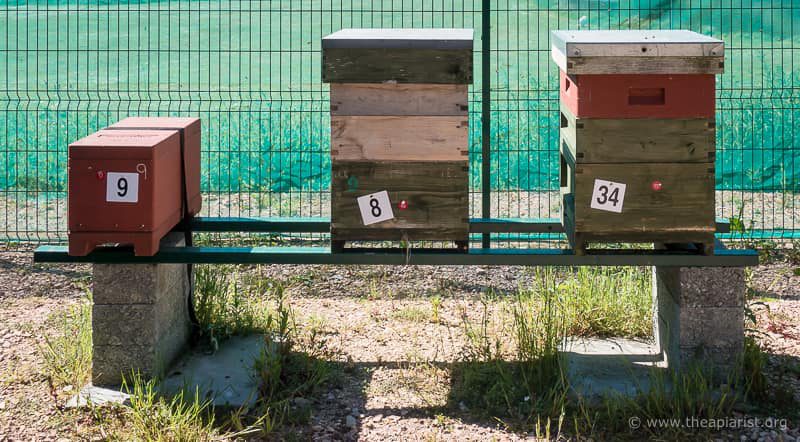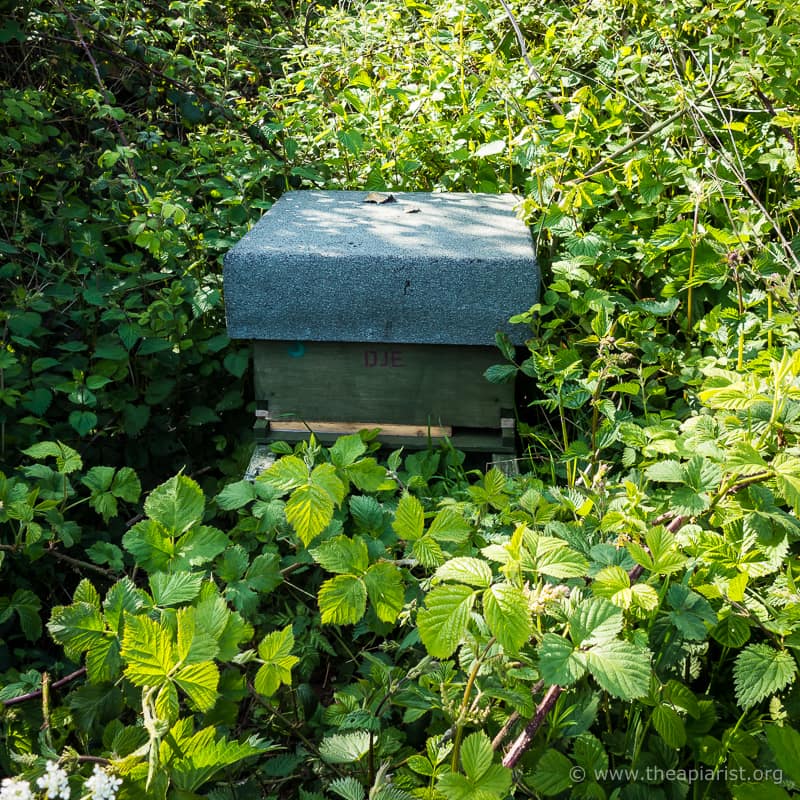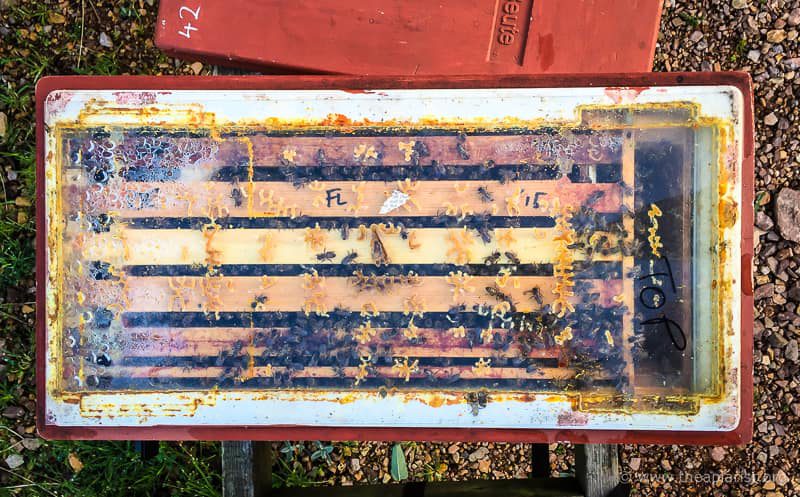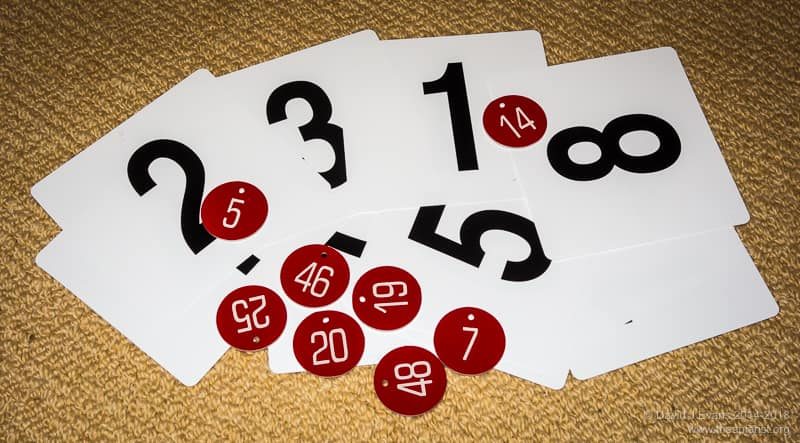Keeping track
It’s mid-May and the beekeeping season in Fife has segued from the early spring ‘phoney war’, where there’s not enough to do, to an earlier-than-normal swarming season where there’s not enough time to do everything needed.
I’ve got more colonies than ever, spread across three apiaries. Work, home and the Naughty Corner {{1}}.
I’ve previously written about that stage in a beekeepers ‘career’ when he or she makes the transition from struggling to keep one colony to struggling to keep up with all the bees they have.
Some never achieve this transition.
Most can with suitable help, support and perseverance.
Others are ‘naturals’ – what’s the equivalent of green-fingered for beekeeping? Sticky fingered (er, probably not) or perhaps propolis-fingered? Whatever, these new beginners smoothly progress to a level of competency well above the norm.
Struggling to keep
Beekeeping is easy in principle, but subtly nuanced in practice. The enthusiastic beginner can struggle. They lose their first colony in the first winter. They buy another, it swarms and throws off several casts and they end up queenless in mid-season. A new queen is purchased, but too late for the main nectar flow.
No honey again 🙁
And, it turns out, too late to build up the colony to get through the winter 🙁
Thoroughly demoralised now, they are resigned to more of the same or giving up altogether.
The overwintered nuc of fashionably dark native bees they ordered from Bob’s Craptastic Bees {{2}} fails to materialise {{3}}.
As does the refund of the £35 deposit 🙁
The empty hive sits forlornly in a patch of weeds at the end of the garden, smelling faintly of propolis and unmet promises.
And, in mid-May, a huge prime swarm moves in 🙂
The beekeeper has never seen so many bees in their life {{4}}. How on earth do all those bees manage to squeeze into that little box?
Following advice from their new mentor, the beekeeper gently slides 11 frames into the box and is encouraged to treat for Varroa before there is any sealed brood. Considering their previous experience things go surprisingly well, not least because the bees have a lovely temperament.
The bees ignore, or at least gracefully tolerate, the beekeeper’s novice fumblings. Instead they single-mindedly focus on drawing comb, rearing brood and collecting nectar.
Struggling to keep up with
The summer is long and warm, with just enough rain to keep the nectar flowing. The hive gets taller as supers are added. By autumn there’s enough honey for friends and family and a partially capped super to leave for the bees.
The bees are lovely to work with and the confidence and competence of the beekeeper improves further.
After overwintering well, the colony builds up strongly again and by mid-May of the following year the beekeeper has used the nucleus method for swarm control and now has two hives. The bees remain calm, steady on the comb, well tempered and prolific.
Very prolific.
By the end of this second ‘proper’ year the beekeeper has two full colonies and a nuc to overwinter.
And so it goes on.
With good bees, good weather, a determination to succeed and supportive training and mentoring the problem should be keeping up with the bees, not keeping them at all.
Stock improvement
Some bees are better than others. Once you have more than one colony – and you should always have at least two – you start to see differences in behaviour and performance.
Frugal colonies overwinter on minimum levels of stores and, if fed properly, don’t need a fondant topup in Spring.
Well behaved colonies are steady on the comb, only get protective when mishandled and don’t follow you around for 200 yards pinging off your veil.
Some bees are great at making more bees but promptly eat all their stores as soon as the weather takes a downturn. Others regularly need three supers per brood box {{5}}.
These traits become apparent over the course of a season and, of course, are diligently recorded in your hive notes 😉
Primarily these characteristics are determined by the genetics of the bees.
Which means you can improve your stock by culling poor queens and uniting colonies and expanding – by splitting or queen rearing – your better bees.
Keeping track
And in between the swarming, splitting, uniting, moving and re-queening the overworked (but now hugely more experienced) beekeeper needs to keep track of everything.
Or, if not everything, then the things that matter.
Which bees are in which box, where that old but good queen was placed for safety while the hive requeened, which box did the overwintered nuc get moved to?
I’ve discussed the importance of record keeping a few years ago {{6}}. I still score colonies by objective (e.g. levels of stores, frames of brood, number of supers added) and subjective (e.g. temper/defensiveness, steadiness on the frame, following) criteria.
This takes just a minute or so. I don’t write an essay, just a simple series of numbers or ticks, followed if necessary by a short statement “Skinny queen, laying rate ⇓, demaree’d” or “Nuc swarm ctrl. O charged QC on W • frame. Knock rest off in 7 days. Emergence ~24th”.
I still use pretty much the same hive record sheet for these notes (available here as a PDF) as it has served me well.
Numbering colonies, hives, boxes and queens
What hasn’t served me so well are the numbers painted on the side of some of my hives.
These were supposed to help me identify which colony was which when I’m reading my notes or in the apiary.
Trivial in the overall scheme of things I know, but as colony numbers have increase and my memory goes in the opposite direction I’ve realised that numbers painted on boxes can be limiting.
For example:
- The colony expands from single to double brood. There are now two numbers on the hive. Which do you use?
- You do a Bailey comb change, consequently changing one brood box for another. Do you record the changed number or continue to refer to it by the old number?
- You use the nucleus method of swarm control. The nuc is numbered. All good. The nuc expands and has to be moved into a hive. It’s the same colony {{7}}, does the number change? It has to if the numbers are painted on the boxes.
- Some hives seem to have never been numbered (or the number has worn off) in the first place. These end up being named ‘The pale cedar box’ or ‘Glued Denrosa’. Distinctive, but not necessarily memorable.
And that’s before we’ve even considered keeping track of queens. For work (and for some aspects of practical beekeeping) queens are sometimes moved.
“Easy” some would say. The characteristics of the colony are primarily due to their genetics. These are determined by the queen. The hive number moves with the queen.
It’s easy to move a queen. It’s a bit more work to move the 60,000 bees she’s left behind to free up the numbered box to accompany her.
More work yes, but not impossible {{8}}.
OK, what about a colony that goes queenless and then rears a new queen? If the logic of hive/colony=queen prevails then logically the requeened colony should be renumbered.
There has to be a better way to do this.
Numbered boxes and numbered queens
I purchased some waterproof plastic numbered cards and some small red engraved disks {{9}}. Both are designed for identifying tables in pubs or restaurants.
I use the plastic card numbers to identify colonies. These accompany the bees and brood if they move from one apiary to another, or as colonies are split and/or united. It’s the colony I inspect, so this provides the relevant geographic reference and is the thing I’m writing about to when my notes state “Nuc swarm ctrl. O charged QC on W • frame. Knock rest off in 7 days. Emergence ~24th”.
I use the red numbers to identify the queen. A queenless colony will therefore have no red disk on it.
When a nuc is promoted to a full hive the number moves with it. If the colony swarms and requeens, one red number is ‘retired’ and a new one is applied.
My notes carry both the colony number and the queen number. I have a separate record of queens, with some more generic comments about the performance of the colonies they head.
The numbers are sold in 50’s … I use them at random {{10}}. About half of them are in use at the moment.
If queen rearing goes well, swarming goes badly or things get out of hand, numbers 51-100 and engraved black disks are also available 😉
Finally, to make life a little simpler I bought a box of stainless steel {{11}} map pins. These are easy to grip with a gloved hand and don’t need to be prised out with a hive tool. They have the additional advantage of being short enough to not project beyond the handhold recess on the sides of most hive boxes so they can be pushed together if they’re being moved.
I’ve got no excuse for mix-ups now… 😉
{{1}}: Where the badly behaved colonies are sent ;-)
{{2}}: Strapline “If the benefits of native bees is all Greek to you buy then your bees from Ροβέρτος Bob – you won’t be disappointed (or surprised)“.
{{3}}: Something to do with Olympic Air … hmmm, why should this influence an overwintered nuc?
{{4}}: In truth the nucs they had bought were thrown together from swarmy bees and unselected queens. The colonies swarmed on six frames of brood, well before the box was filled.
{{5}}: Or four or more if you’re in the balmy South of England … in Fife the season is shorter and the yields are less. But I’d always prefer quality to quantity :-)
{{6}}: 2015 … was it really that long ago?
{{7}}: It’s actually the ‘parental’ colony that’s going to change.
{{8}}: But in reality totally out of the question in the middle of the swarm season when you’re running out of time, equipment and patience!
{{9}}: Shop around, these have both doubled in price since I purchased them.
{{10}}: After all, the entire reason I’m using them is because boxes and queens get moved around.
{{11}}: Allegedly … I think some are showing signs of rust already :-(






Join the discussion ...